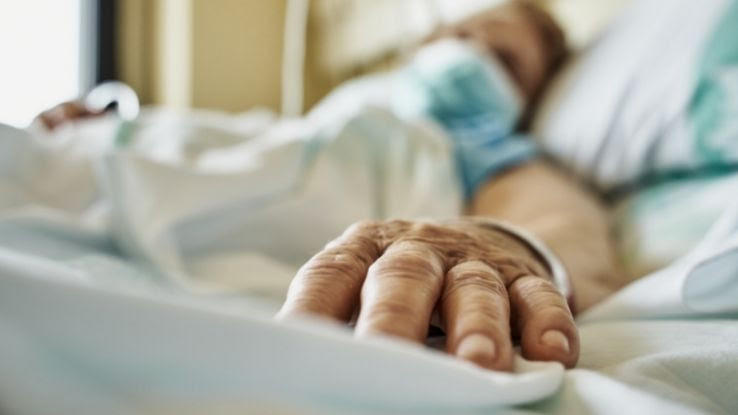Pacific Prime Can Be Fun For Anyone
Table of ContentsThe Facts About Pacific Prime RevealedIndicators on Pacific Prime You Need To Know7 Easy Facts About Pacific Prime DescribedPacific Prime - An OverviewThe Facts About Pacific Prime Revealed

This is because the data were gathered for a duration of strong economic efficiency. Of the estimated 42 million individuals that were uninsured, all however about 420,000 (about 1 percent) were under 65 years old, the age at which most Americans become qualified for Medicare; 32 million were adults in between ages 18 and 65, around 19 percent of all adults in this age; and 10 million were kids under 18 years old, about 13.9 percent of all kids (Mills, 2000).
These price quotes of the number of individuals without insurance are created from the annual March Supplement to the Present Population Survey (CPS), carried out by the Demographics Bureau. Unless or else noted, nationwide price quotes of individuals without medical insurance and proportions of the populace with various sort of protection are based upon the CPS, one of the most extensively used resource of price quotes of insurance coverage and uninsurance rates.
The Of Pacific Prime

Still, the CPS is especially beneficial since it creates annual estimates fairly swiftly, reporting the previous year's insurance protection approximates each September, and because it is the basis for a regular collection of quotes for greater than two decades, enabling for analysis of fads in insurance coverage gradually. For these reasons, as well as the extensive usage of the CPS in other studies of insurance coverage that are offered in this report, we rely upon CPS price quotes, with limitations noted.

The estimate of the number of uninsured people expands when a population's insurance condition is tracked for several years. Over a three-year duration beginning early in 1993, 72 million people, 29 percent of the U.S. https://www.tripadvisor.in/Profile/pacificpr1me. populace, were without coverage for at the very least one month. Within a single year (1994 ), 53 million people experienced at the very least a month without insurance coverage (Bennefield, 1998a)
Six out of every 10 without insurance adults are themselves employed. Although functioning does improve the likelihood that a person and one's household members will have insurance policy, it is not an assurance. Also members of family members with two permanent wage earners have virtually a one-in-ten possibility of being without insurance (9.1 percent uninsured price) (Hoffman and find more information Pohl, 2000).
Pacific Prime Fundamentals Explained
New immigrants account for a substantial proportion of individuals without medical insurance. One evaluation has actually attributed a considerable part of the current development in the dimension of the U.S. uninsured populace to immigrants that got here in the country between 1994 and 1998 (Camarota and Edwards, 2000). Current immigrants (those who pertained to the USA within the previous 4 years) do have a high price of being without insurance (46 percent), but they and their children account for just 6 percent of those without insurance policy nationally (Holahan et al., 2001).
The connection between health and wellness insurance coverage and access to care is well established, as documented later in this chapter. The connection between wellness insurance coverage and health and wellness outcomes is neither direct nor simple, a considerable professional and wellness solutions research study literature web links wellness insurance policy coverage to improved accessibility to care, far better top quality, and enhanced personal and populace health and wellness condition.
Degrees of analysis for analyzing the effects of uninsurance. This conversation of wellness insurance policy protection focuses largely on the U.S. populace under age 65 due to the fact that virtually all Americans 65 and older have Medicare or various other public coverage. It concentrates specifically on those without any type of health insurance policy for any length of time.
The Ultimate Guide To Pacific Prime
The troubles encountered by the underinsured are in some areas similar to those faced by the without insurance, although they are typically much less extreme. Wellness insurance policy, nevertheless, is neither necessary neither adequate to gain accessibility to medical solutions. The independent and direct result of health and wellness insurance protection on access to wellness services is well developed.
Others will obtain the healthcare they require also without medical insurance, by paying for it out of pocket or seeking it from companies who offer treatment totally free or at very subsidized rates. For still others, medical insurance alone does not ensure receipt of treatment because of various other nonfinancial obstacles, such as an absence of health treatment service providers in their neighborhood, minimal access to transportation, illiteracy, or etymological and social differences.
Everything about Pacific Prime
Official research about uninsured populaces in the USA dates to the late 1920s and very early 1930s when the Board on the Price of Treatment produced a collection of reports about financing doctor office sees and hospital stays. This problem became salient as the numbers of medically indigent climbed up during the Great Anxiety.